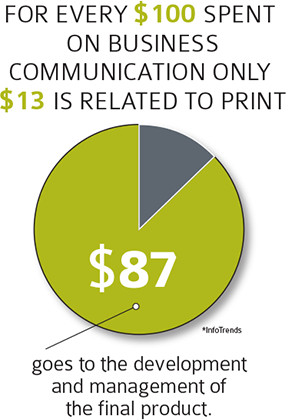When economic times are uncertain, different businesses take different strategies. Some tighten the belt, hunker down, and wait for things to improve. Others see opportunities. When their competitors pull back, they invest so they are way ahead when times get better.
This strategy sounds good, but does it work? History says it does. Research from Harvard Business Review (HBR) found that, during the past three U.S. recessions, 91% of businesses struggled, while 9% thrived. What did these successful businesses have in common? Marketing! HBR found that, during recessions, successful businesses differentiated from non-successful businesses by maintaining their commitment to marketing, staffing, and pursuing operational efficiencies that would benefit them for the long term.
What happens when they don't? HBR offered one cautionary tale:
[During the 2000 recession,] Office Depot cut staff by 6% to cut losses for the near term. Staples hired more staff and looked for opportunities to improve operational efficiencies and invest for the long term. As a result, Staples’ sales doubled at the end of the 2000 recession and were substantially higher than Office Depot’s sales, billions ahead of Staples before the recession.How can you apply these lessons to your marketing? During a slow-down, use the time to do the following:
1. Invest in technology. Improve operational efficiencies by eliminating repetitive tasks. For example, move repeat jobs or those requiring limited changes into templates stored in an online marketing portal. This saves time, lowers costs, and reduces errors.
2. Expand your channel mix. When you want to steal market share from a competitor, you need to saturate the market with all of the available channels—direct mail, email, social media, and wide-format graphics. Be everywhere!
3. Invest in data. Do a deep clean on your data to use only the most up-to-date information on your target audience. Invest in additional data, if necessary, to make your targeting even more effective.
As the saying goes, “When the going gets tough, the tough get marketing!” Commit to a long-term strategy. Use the time to make strategic investments. Then, emerge on the other side of challenging times even stronger and more profitable.



